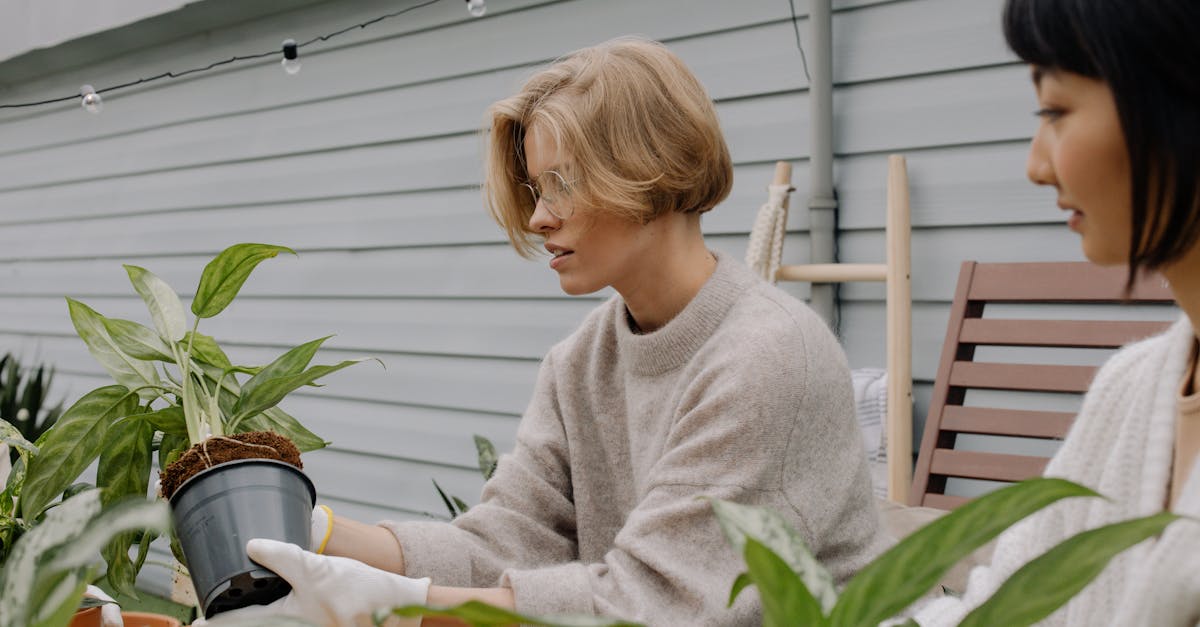Ready to enhance your indoor jungle? Transplanting houseplants is a rewarding way to refresh your space and promote growth.
In this guide, we’ll walk you through the important steps to successfully transplant your leafy companions.
From choosing the right potting mix to mastering the art of repotting, we’ve got you covered.
Let’s immerse and give our green friends the new home they deserve.
Key Takeaways
- Timing is crucial: Transplant houseplants during spring or fall for optimal growth; avoid winter when plants are dormant.
- Choose the right size pot: Select a pot slightly larger than the current one with proper drainage to promote healthy root development.
- Prepare the plant carefully: Water it before transplanting, gently remove from the pot, inspect roots, and loosen if necessary for successful transition.
- Master repotting techniques: Handle plants with care; inspect roots, loosen if compact, add fresh potting mix with proper drainage, and water thoroughly post-repotting.
- Care post-transplant: Monitor watering needs, ensure proper lighting, delay fertilization, and adjust care based on plant response.
- Seek additional resources: Visit websites like the University of Illinois Extension, Royal Horticultural Society, or Gardeners’ World for more detailed guidance on transplanting and caring for houseplants.

Choose the Right Time
When it comes to transplanting houseplants, timing is critical. Spring and Fall are ideal seasons for this task as plants are more resilient during periods of active growth. Avoid transplanting during winter when plants are dormant and less likely to adapt to a new environment. Keep an eye out for signs of distress like yellowing leaves or stunted growth, as these may indicate the need for a new home.
Pro tip: If you’re unsure, simply observe your plant. Once it outgrows its current pot or shows signs of being root-bound, it’s time for a change. This gentle approach ensures the well-being of your green companion throughout the transplanting process.
For more information on understanding your plant’s growth cycles, check out this gardening resource.
Selecting the Correct Pot
When choosing a new pot for your houseplant, opt for one that is slightly larger than its current container. Make sure the pot has drainage holes to prevent waterlogging. It’s important to select a pot that matches the growth rate of your plant. To avoid overwatering, pick a pot made of porous materials like terracotta. After all, a good pot will promote healthy root development and and so plant growth.
For more information on selecting the right pot size for your houseplant, you can visit the University of Illinois Extension website.

Preparing the Plant
When Preparing the Plant for transplanting, we need to ensure it’s in optimal condition for a successful transition. Here’s what to do:
- Water the Plant: It’s important to water the plant a day or two before transplanting to help reduce stress.
- Gently Remove the Plant: Carefully take the plant out of its current pot, ensuring not to damage the roots.
- Inspect the Roots:Check the roots for any signs of diseases or rot, trimming any damaged areas.
- Loosen the Roots:Gently loosen the roots if they appear to be tightly packed, encouraging healthy growth in the new pot.
For more detailed information on preparing your plant for transplant, you can visit the University of Illinois Extension website.
Repotting Techniques
When it comes to repotting our houseplants, we need to handle them with care to ensure a smooth transition to their new homes. Here are some important techniques to follow for successful repotting:
- Gently Remove the Plant: Carefully take the plant out of its current pot, avoiding damage to the roots.
- Inspect Roots: Check the roots for any signs of disease or rot; trim as necessary to ensure healthy growth.
- Loosen Compact Roots: If the roots are tightly packed, gently loosen them to encourage new growth.
- Fill New Pot: Add fresh potting mix to the new container, ensuring it has proper drainage.
- Transplant the Plant: Place the plant in its new home, making sure it sits at the same level as before.
- Water Thoroughly: After repotting, water the plant to help it settle into its new environment.
For additional tips and detailed instructions on repotting techniques, you can visit the University of Illinois Extension website.

Caring for the Transplanted Plant
After repotting our houseplant, we want to ensure it thrives in its new home. Here are some tips for caring for the transplanted plant:
- Watering: Keep an eye on the plant’s moisture needs. Check the soil regularly and water when the top inch feels dry.
- Light: Place the plant in an area with the right amount of sunlight. Adjust according to its specific light requirements.
- Fertilizing: Wait a few weeks before fertilizing to allow the plant to adjust to its new environment.
For more detailed care instructions, refer to resources from the Royal Horticultural Society or Gardeners’ World.
After all, each plant is unique, so observe how our plant responds to its new pot and adjust care accordingly.
